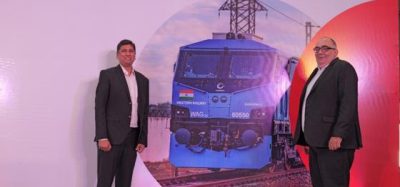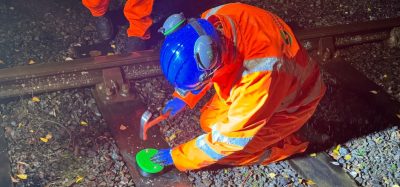The future of rail uniforms: combining sustainability, technology and practicality
Posted: 23 September 2025 | Ann Dowdeswell | No comments yet
In celebration of Railway 200, Ann Dowdeswell, CEO of Jermyn Street Design, explores how sustainability, technology and modernisation are shaping the next generation of rail uniforms.


Credit: Jermyn Street Design
Over the past 200 years, the rail staff uniform has emerged as a crucial facet of brand identity, customer service and operational excellence. Today, as rail operators navigate an era of transformation, sustainability initiatives, digitalisation, and modern design are redefining rail uniforms to enhance efficiency, support staff wellbeing and reflect a brand’s values. Across the industry, innovations in eco-friendly materials, AI-driven design, wearable technology, and inclusive strategies are shaping the rail uniforms of tomorrow.
Sustainability: redefining the fabric of rail uniforms
Sustainability has become a core value for the rail sector. With rail often lauded as one of the most eco-friendly transport modes, operators are extending green practices to every facet of their operations – including staff uniforms.
Sustainable materials have become a key consideration. Below are the materials that are increasingly in demand:
Join our free webinar: Rail cyber-security in a time of technological and regulatory transformation
Join our expert panel, including speakers from Nokia and Siemens Mobility, to explore the critical convergence of cybersecurity and 5G rail comms.
Date: 3 Dec | Time: 15:00 GMT
Can’t attend live? No worries – register to receive the recording post-event.
- Recycled polyester and organic cotton: popular as they reduce water usage, pesticides and carbon emissions.
- Bamboo blends: bamboo grows rapidly and requires minimal pesticides, making it a highly sustainable raw material. It also offers natural antibacterial properties and breathability, critical for comfort in active roles.
- Innovative fibres: some brands now explore algae-based or biodegradable materials, which have lower carbon footprints and degrade more naturally at the end of their life-cycle.
Ethical production has become increasingly important to brands, as fair wages and safe conditions are a non-negotiable element in the supply chain. Sourcing garments from ethically certified factories ensures better working conditions and supports fair labour practices, while local and nearshore manufacturing reduces shipping distances and lessens carbon emissions, expedites delivery, and supports local economies.
Life-cycle management is becoming increasingly valued as extending the lifespan of uniforms is prioritised as part of sustainability commitments. Choosing robust fabrics and easy repair processes reduces waste, but it goes much further than this as the journey of a uniform and its future life must also be considered. Uniform recycling initiatives have been adopted by many industry leading operators with end-of-life garments being recycled or upcycled to avoid landfill. Many operators now partner with recycling specialists to transform old uniforms into new textiles or repurposed products.
Technological innovations in uniform
Technology enables game changing sustainability, whilst creating operational improvements and enhancing wearer experience. As we learn to blend these elements it’s an exciting time to be in design and manufacturing; we are enabling more efficient design processes, enhanced functionality and improved staff wellbeing all at once. Here are some of the leading technological innovations we are exploring.
Future-forward operators are exploring the potential for uniforms to integrate with station sensors or train systems, offering real-time passenger flow updates and safety alerts.”
Wearable tech integration is an element many wearers are excited by, as this is technology they can see and feel. Contactless communication devices can be used to enhance the process of sharing information. Uniforms can discreetly incorporate RFID tags or NFC chips for secure and swift communications, enabling easier staff identification or access control.
Future-forward rail operators are also exploring the potential for uniforms to integrate with station sensors or train systems, offering real-time passenger flow updates, safety alerts and more as they look to utilise IoT connectivity.
Online uniform management portals enable staff to order, track and request uniform items through an integrated digital platform. Simplifying inventory control and cutting administrative costs and real-time analytics on garment usage, staff feedback and performance, helps operators make evidence-based decisions about uniform updates and replacements.
3D body scanning and virtual fitting has been a gamechanger for so many wearers and we are excited for this to be further refined in the coming years. By using 3D scanning to efficiently capture individual measurements, uniforms can be tailored to each employee for optimal comfort and professional appearance, ensuring a customised fit. This not only aids wearer wellbeing, but supports sustainability with reduced returns, as virtual sampling and fitting cut down on material wastage, expedite lead times, and slash logistical costs associated with returns and exchanges.
Enhancing the health of the workforce
Beyond this use of technology for operational information gathering, an element with great potential for positive impact on the individual is health monitoring. Biosensors can monitor heart rate or stress levels in high-intensity roles, enhancing staff safety and wellbeing. This truly is committing to staff wellbeing for future generations on a whole new level.
Smart textiles – this term includes aspects such as temperature regulation, where garments are embedded with phase-change materials (PCMs), which help staff maintain a comfortable body temperature, whatever climate they are in. This can prove crucial for employees who frequently move between indoor and outdoor environments.
Anti-microbial treatments make the garments work harder for the wearer. Thanks to advanced coatings on fabrics, we can combat odour and bacteria, reducing the need for frequent washing and extending garment life.
Uniforms are an extension of an individual
Technology has a huge part to play in the future generation of rail uniforms. The new functions and features are real developments in creating smarter use garments, but it’s important not to get lost in the tech. Our focus is always on helping a brand to create stronger human connection – remembering that uniforms are an extension of an individual. Using technology to support individuality, whilst enabling mass production on huge scales, is the big win in my eyes.
At JSD our ethos is “no-one is uniform”. Putting the wearer at the centre of everything we do is paramount from the early stages of design and production. Uniforms have always represented something more in terms of brand positioning and heritage. The future of rail operators’ workwear will continue to have this emphasis, being a reflection of the brand, delivering on passenger expectations and operational requirements.
It’s easier than ever to create a future-facing style, made with the comfort of the individual wearer in mind, and built for longevity. It’s simpler than ever to look after the planet as well as your people, and to aid productivity and profitability, through co-creation of technological advanced uniforms.
As the rail industry looks beyond “Railway 200” and to the centuries ahead, uniforms will play a pivotal role in exemplifying brand identity, operational efficiency and sustainability commitments. The future of rail uniforms is one of synergy – where tradition meets cutting edge innovation, where comfort meets responsibility, and where design meets passenger satisfaction.
JSD stands ready to guide rail operators through this transformative journey by marrying eco-conscious materials, advanced textile technologies and fabrics, and inclusive designs to deliver uniform solutions that capture the essence of modern rail travel. Together, we can continue to elevate the passenger experience, empower staff, and uphold the environmental values that define the next chapter of railway history.
For rail operators looking to explore these trends in greater depth, Jermyn Street Design has developed a White Paper, The Future of Rail Uniforms: Sustainability, Technology, and Innovation, offering further insights and practical guidance on designing the next generation of railwear.
About the author


Ann Dowdeswell is CEO of Jermyn Street Design (JSD), a London-based B Corp specialising in custom uniforms and ethical workwear. After leading the management buyout earlier this year, she continues to drive the multimillion-pound, multi award-winning business forward. JSD is recognised globally for blending British craftsmanship with design innovation and technology, while keeping the wearer at the heart of everything they do. With a tailored, client-focused service, they deliver uniforms that support both people and planet.
Global Railway Review Autumn/ Winter Issue 2025
Welcome to 2025’s Autumn/ Winter issue of Global Railway Review!
The dynamism of our sector has never been more apparent, driven by technological leaps, evolving societal demands, and an urgent global imperative for sustainable solutions.
>>> Read the issue in full now! <<<
Related topics
Sustainability/Decarbonisation, Technology & Software, The Workforce







